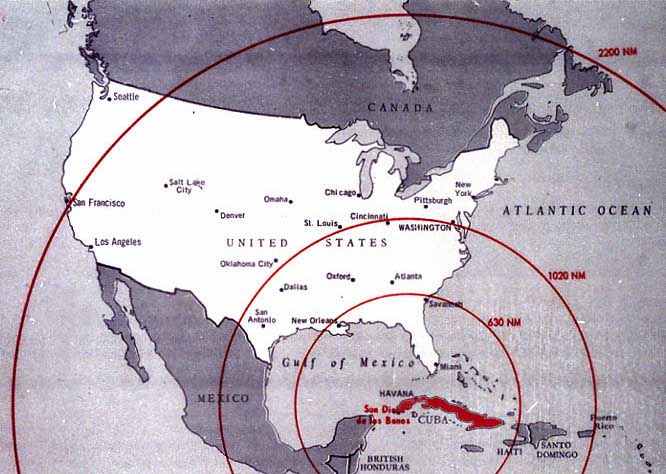September 7, 2009
Nuclear optimism is a school of thought which argues that more nuclear weapons make the world safer. Given that our nation and Russia each has around 10,000 such weapons in its arsenal, such thinking is more widespread than might be thought. The following assessment is therefore much more than an academic exercise, and has vital implications for humanity's future.
In a five-page essay in the September 7 issue of Newsweek, Jonathan Tepperman explains Why Obama Should Learn to Love the Bomb by quoting the dean of nuclear optimism, Prof. Kenneth Waltz: "We now have 64 years of experience since Hiroshima. It's striking and against all historical precedent that for that substantial period, there has not been any war among nuclear states." Tepperman calls for "coldblooded calculations about just how dangerous possessing them [nuclear weapons] actually is." This response rises to that challenge and shows that the data used to justify nuclear optimism is highly misleading.
In the same way that life-insurance companies utilize statistical analysis to produce cold blooded projections of fatality rates for individuals, statistics tells us that, to be 95% confident of our statements, we cannot project the last 64 years of nuclear non-use more than 21 years into the future. And, with the fate of the earth at stake, a higher confidence level would seem appropriate. To be 99% confident about our statements, nuclear optimism can only be justified for another 14 years. Statistics does not rule out that we might survive significantly longer than these time horizons, but it does say that the data thus far cannot be used to justify such hopes with any degree of confidence.
To understand why we can only be confident of surviving time horizons significantly shorter than the 64 years of non-use already experienced, it helps to consider related "space shuttle optimism" arguments that led to the loss of Challenger and her crew. The engineers who had designed the shuttle's booster engine tried to delay Challenger's final launch because the weather that morning was unusually cold, and previous cold weather launches had a higher incidence of partial "burn through" on O-rings designed to seal the booster. But those at NASA responsible for the launch decision suffered from the common misperception that the shuttle's prior 23 successful launches provided ample evidence that it was safe to proceed with launch number 24. Instead, as we now know, that launch suffered catastrophic burn through of the O-rings, with resultant loss of the shuttle and her entire crew.
NASA's optimistic reasoning was literally dead wrong. Even 23 perfect launches would not have provided sufficient evidence to confidently predict success for launch number 24, and previous near misses, in the form of partial O-ring burn through, made optimism even more outrageous and unsupportable. The unassailable, cold blooded conclusion provided by statistics and Challenger's deadly lesson is that 64 years of nuclear non-use, particularly with near misses such as the Cuban missile crisis, is no cause for nuclear optimism.
* Martin E. Hellman is a member of the National Academy of Engineering and Professor Emeritus at Stanford University. His current project applies risk analysis to nuclear deterrence, and is described in detail at NuclearRisk.org. A summary statement has been endorsed by:
- Prof. Kenneth Arrow, Stanford University, 1972 Nobel Laureate in Economics
- Mr. D. James Bidzos, Chairman of the Board, VeriSign Inc.
- Dr. Richard Garwin, IBM Fellow Emeritus, former member President's Science Advisory Committee and Defense Science Board
- Adm. Bobby R. Inman, USN (Ret.), University of Texas at Austin, former Director National Security Agency and Deputy Director CIA
- Prof. William Kays, former Dean of Engineering, Stanford University
- Prof. Donald Kennedy, President Emeritus of Stanford University, former head of Food and Drug Administration
- Prof. Martin Perl, Stanford University, 1995 Nobel Laureate in Physics
HOW YOU CAN HELP:
To create greater public awareness of this critical issue, I
hope you will forward this email to friends who might be
interested and encourage them to sign up for future updates
via the JOIN US box in the left margin of this page
RESOURCES:
To better understand the problem and solution check out
Soaring, Cryptography and Nuclear Weapons
as well as our
Frequently Asked Questions.
Earlier emails to the group are on our Resource Page, along with other useful information. Email #4 and Email #5 describe recent events which had the potential to produce risk comparable to that of the 1962 Cuban crisis.
Email #21 has added a powerful illustration of "the man in the TNT vest."
SUBSCRIPTIONS:
To send a comment, change your email address, or unsubscribe please
send me a message at ___ (address deleted from web version to avoid spam).



